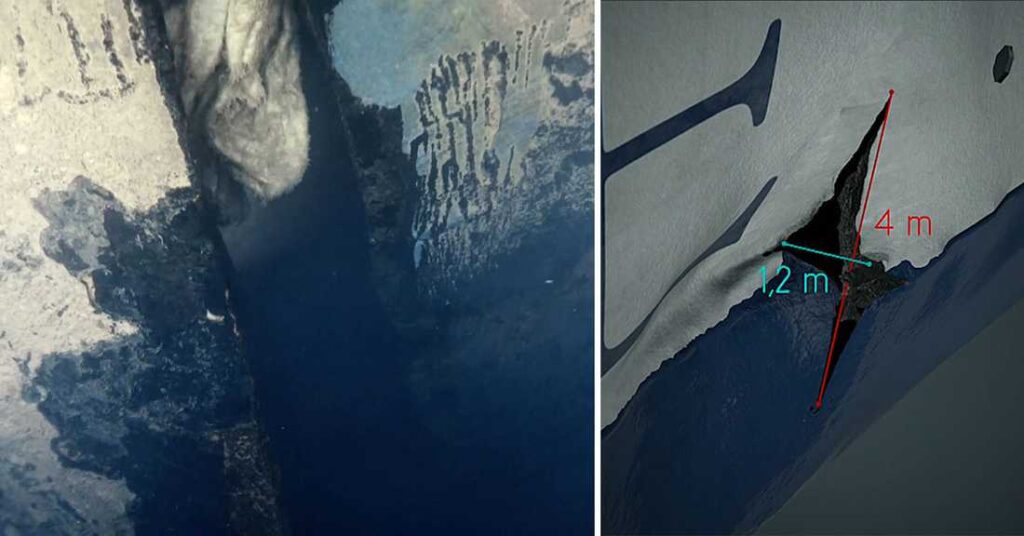The Swedish government said on 18 December it would allow a new underwater examination of MS Estonia; the ferry sank in the Baltic sea in 1994 with the loss of 852 lives.
Sweden’s government decision follows the screening of a new footage that revealed a wide hole in the ferry’s hull, on the starboard side. Until the revelation, the hole had not publicly been mentioned or documented.
The footage, shown in a documentary that premiered in Sweden on 28 September, caused a stir in Estonia and Sweden. The documentary was made by a team led by the Swedish author and journalist, Henrik Evertsson. The team used remotely operated underwater robots and divers to examine and videotape the wreck and the footage revealed a hole, four metres high and 1.2 metres wide, in the ferry’s hull.

“If there is new information, we need to look into it and clear up any questions,” the Swedish home affairs minister, Mikael Damberg, said at a press conference on 18 December, according to Reuters.
Damberg also said the Swedish government hoped to amend the law designating the site of the disaster as a maritime memorial in 2021 – in 1995, a treaty was agreed by Sweden, Finland, Estonia, Latvia, Poland, Denmark, Russia and the United Kingdom, declaring sanctity over the disaster site, prohibiting their citizens from even approaching the wreck of MS Estonia.
Estonia’s very own “Kennedy moment”
MS Estonia, a 16,000-ton cruise ferry that began serving the Tallinn-Stockholm route in 1993 and was operated by the Swedish-Estonian shipping company, Estline, was the largest ship sailing under the Estonian flag at the time. In fact, the elegant white and blue coloured ferry was seen as one of the symbols of newly found confidence of the young republic that had just regained independence, three year prior.
But in the morning of 28 September 1994, the entire country of Estonia woke up in shock to the news that MS Estonia had sunk in the early hours. For Estonians, it was their very own “Kennedy moment” – everyone who was alive at the time, remembers where they were and what they were doing upon hearing the news.
The ship sank in the Baltic Sea while on a scheduled crossing, en route from Tallinn to Stockholm, where she had been expected in the morning. MS Estonia disappeared from the radar screens of other ships at around 01:50 AM EEST in international waters, about 22 nautical miles (41 kilometres) from the Finnish island of Utö. The ferry sank to the depth of 74 to 85 metres (243 to 279 ft) of water.

What made it headline news around the world was the huge loss of life. Of the 989 on board, only 138 were rescued alive (one of whom died later in hospital). As such, it is the second-deadliest peacetime sinking of a European ship, after the RMS Titanic, and the deadliest peacetime shipwreck to have occurred in European waters, with 852 lives lost. Most of the victims were Swedes (501), followed by Estonians (285).
Conspiracy theories
The official disaster report said the fatal event started when the locks on the ferry’s bow door failed from the strain of the waves and the door separated from the rest of the vessel, pulling the ramp behind it ajar. This allowed water into the vehicle deck, capsizing and ultimately sinking the ship.
As always with big disasters, conspiracy theories that questioned the official report, followed – from an explosion onboard the ferry to a collision with an unidentified submarine. Most of the conspiracy theories focus on the loud bangs many survivors heard approximately half an hour to an hour before MS Estonia sank – and the fact that the ship sank so quickly (in about half an hour), arguing that the ferry of that type should have remained afloat even after capsizing.
In subsequent years, the lobby groups representing the victims’ families have on several occasions demanded a new investigation. Until the named documentary, the Estonian, Swedish and Finnish governments always turned a deaf ear.
Cover: An illustration of MS Estonia. Image by Blue Star Line/YouTube.

